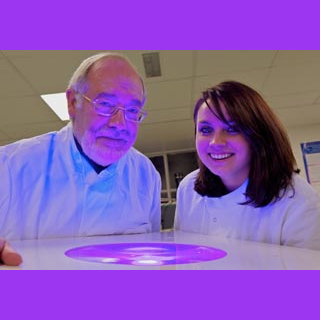
The system employs a narrow spectrum of visible-light wavelengths to excite molecules present within bacteria. Then a highly reactive chemical species is seemingly generated which kill bacteria, including MRSA and C.diff. The technology supposedly helps in avoiding the environmental transmission of pathogens and improves patient safety. The HINS-light used by researchers in the current investigation is a combination of LED technologies producing a warm white lighting system that can be put to use along with normal hospital lighting.
Professor Scott MacGregor, Dean of the Faculty of Engineering, and colleagues suggest that decontamination methods such as gas sterilants or UV-light are dangerous to humans. HINS-light on the other hand, is both safe as well as easily automated to control continuous disinfection. Since the light has a pervasive nature, it can possibly treat air and all visible surfaces either through direct or reflected exposure.
